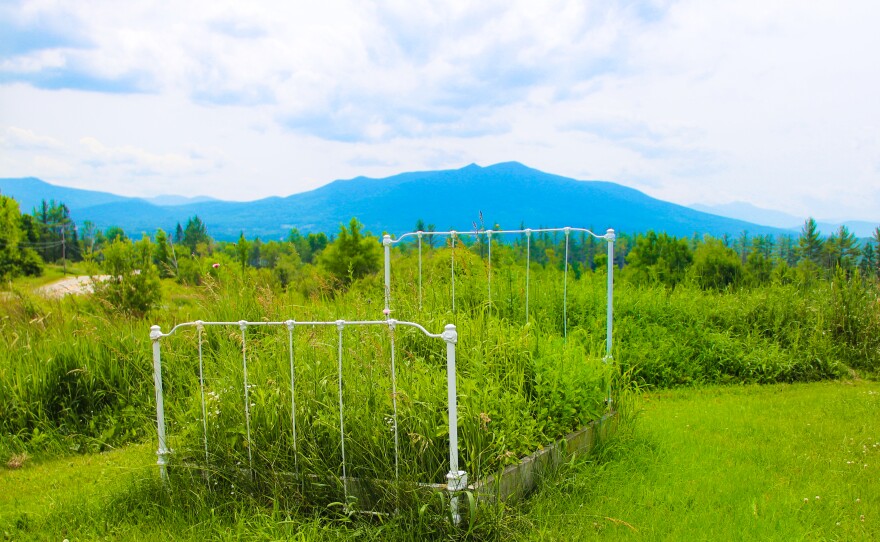Since 1996, the State Archeologist Dick Boisvert has led excavations at sites in Jefferson, uncovering tools and stone shards that tell the story of the Paleo-Indian people who lived in New Hampshire 12,000 years ago.
By the road is an antique bed frame half-sunk in the dirt. 12,000 years from now a future archeologist may dig it up and speculate that we people of the 21st century liked to sleep under the stars on iron beds - and maybe never guess that the old frame was simply a lawn decoration for a local bed and breakfast.
Finding very old things in the dirt - and trying to divine their human context - is what Dick Boisvert does every day.
"I tell people my job description involves going into square miles of New Hampshire forest, looking for artifacts the size of a postage stamp buried a foot in the ground the color of dirt. And it's my job to go and find them."
A stone's throw from the sinking bed frame, Boisvert leads a group of 11 volunteers at the Jefferson 6 site. The team digs up tiny bits of local rhyolite and Munsungen rock that can only have been carried here from Maine 10 to 12,000 years ago by a nomadic family of Paleo-Indians.
"We're looking at their footprint left in little pieces of stone - a colleague once described them as "fossil corn flakes" - and that's just a small part of their life. We're obviously missing a lot too."
Though only a day old, the 20 meter square excavation site has already taken on the look of a hopscotch court.
In the dig area, Mary-Pat King from Hampton fills a bucket with dirt and delivers it to Boisvert's archeologist wife, Debbie, in the sifting area.
"I think it's harder to dig. What do you think?"
"It depends. I think it gets motivating by what you're finding where. If you're finding more stuff in the screen, you want to be on the screen. If you can find it in situ, you really want to be digging."
At the next sifting station, Dana Mastroianni, a library director from Massachusetts, huddles over the stones and pebbles that remain in her screen. This is her first time volunteering with SCRAP - the State Conservation Rescue Archeology Program - a two week crash course led by Boisvert.
"I really get into it when I'm doing the screening cause I get very intense on looking at every little piece that's in there and then some - and start imagining things that are there that aren't which probably isn't the best thing..."
Mastroianni hands Boisvert a possible find - a small dark chip of rhyolite.
"It doesn't have the regular flaking that I'd like to see. It doesn't have some of the landmarks that you'd expect to see on a tool or a flake. So it superficially resembles an artifact, but I don't believe that it is."
He tosses it aside and Mastroianni keeps searching.
"You never can look at a piece of gravel again the same way. Of course, it's all a matter of is this your thing or not?"
Finding out whether it's your thing, Boisvert says, is a fundamental part of the SCRAP program.
"What I offer to people is something that's very much the equivalent to a working job in archeology. The full day, the full experience. I can teach somebody the basics of field archeology - 90% of what they need to know - I can teach that in the first two weeks, but like chess it takes a lifetime to master it."
When Boisvert looks out over the ranging valley toward Cherry Mountain, he removes the trees and imagines the wide glacial lake that was here at the end of the Pleistocene. Back then, Jefferson was a place of harsh winds with the temperature gradient of northern Canada. From a spear tip that Boisvert's testing finds positive for caribou, he can begin to draw a fuller picture.
"So they are caribou hunters. They're living in an environment that was extraordinarily cold. It looks as though it was a place where a family lived for a while."
Good, if tiny, evidence leads to careful assumptions. These get checked by computer models and corroborated by higher math which then permits a fresh round of speculation and finally a return to the original questions: Who lived here and for how long? What was their life like?
"It is our history. And the history informs us of where we come from and how we are the way we are today."
Who we used to be found in little stones just below the grass.












